Welcome to Natural Wonders, where I hope to pique your interest each week by sharing some fascinating questions and answers about natural phenomena. If you’re new here or if someone forwarded you this email, you can subscribe below.
Check out past posts by going here and see who I am and what Natural Wonders is about here.
Last week I went on a work-party bike ride with friends to cut out several downed trees from trails on Forest Service land. There’s nothing like chain-sawing (or worse yet – hand sawing) trees to give you an appreciation for the density of tree trunks and the sheer mass of fiber involved in the making of a tree. Not to mention the amount of time it took to grow to that size.
Working on clearing trails of tree trunks, branches, and debris gave me plenty of time to notice details I’d otherwise miss skimming down the trail on my bike. At one point, I rounded a corner and saw the tree combination in the photo above – it’s almost as if a momma tree has her baby hitched up on her hip while she tries to unload her grocery cart in the checkout line. When I examined it closely, I could see the two trees were melded together, almost as if they were glued. It also seemed as if they may have been two different species, although it’s hard to tell without leaves on the trees – younger tree bark is always smoother than older trees which, like people, get more wrinkled with age.
It reminded me of another tree I’d seen on a bike ride that we’d nicknamed the divorce tree:
It started as one tree at the bottom, then split in two (the “divorce”) and then rejoined back together in the two sections you see above. This was a beech tree, and it was definitely odd. It made me wonder:
What causes trees to fuse together?
I found out that this is a somewhat rare phenomenon that’s called inosculation. It happens when two branches rub together over time and wear away the outer bark until the thin inner bark of both trees, called the cambium, begins to touch. The cambium is the layer just between the protective outer bark and the inner sapwood that transports nutrients. After the branches have rubbed away the outer bark and exposed the cambium, they begin to build up a protective layer to heal, similar to the burls I’ve written about before.
Below you can see where a rhododendron is rubbing up against another tree, slowly wearing into the cambium layer. Give it a few years and they might fuse together. The only issue it in this particular situation is that this rhododendron serves as a handhold for humans trying to navigate down an extremely steep trail, so the branch may never lay still against the tree long enough to fuse.
Inosculation can happen when a tree connects its own branches to each other, like this:
And it can also happen when two separate trees, even those of different species, connect to each other, like this rhododendron that’s melding together with a nearby tree:
It tends to happen more with holly, apple, maple, crepe myrtle, pear, sycamore, beeches and other thin-barked trees. Beeches often inosculate because they tend to grow in groves and send up root sprouts for new growth. This means trees often grow up very close to each other with branches that touch and intertwine.
When two separate trees become conjoined like this, they’re called “marriage trees,” which is a nicer choice than our “divorce tree” nickname. Here are two trees we caught smooching on Wine Creek (coincidence? I think not…)
This is especially appropriate since the word “inosculation” derives from osculum, the Latin word for “kiss.”
There are two kinds of inoculation: grafting, where the two trees form a clean bond with each other. In these cases, the joined trees will share nutrients and water through their new connection, but it’s not yet clear whether they share genetic material with each other. Here are two holly trees that have grafted together well:
Another great example of grafting can be seen below, where the smaller tree was actually cut off from its roots years ago and is being completely supported and nourished by the tree it’s married to (click the picture to get a better view):


The other kind of inosculation is called wounding, when scar tissue forms between the trees but dies back into dead wood. That’s what happened with the kissing trees above – despite the romantic overtones, they are not supporting each other’s growth. Wounding is also what’s happening with this tree that’s trying to heal over a too-tight chain from an old tree stand:
Of course, horticulturists have known about intentionally grafting tree branches for around 3,000 years. It’s how we get “weeping” varieties of fruit trees, where a “weeping” branch is often grafted onto a variety that doesn’t weep in order to create the arched effect.
Some folks go all-out with grafting trees in creative ways. Technically, this isn’t “inosculation” because it didn’t happen naturally in the wild. But in doing research for this week’s newsletter I came across information about a Swedish tree shaper named Axel Erlandson who created the Gallery of Circus Trees. Take a look at some of the amazing work he’s done:

It just confirms, once again, that nature is amazing.
Nature Break: Take a walk in the woods. Watch for thin-barked trees such as hollies, sycamores, mountain laurel, rhododendron and beeches. Look for any trees that seem to be leaning on each other or extra close. Have they fused together? This will be easier to see before trees fully leaf out and obscure their upper branches.
Have you seen fused or conjoined branches and trees? Let us know in the comments below and describe what you’ve seen and where - join the conversation!
Weird Nature
Detritus
Pooktre is the process of gradually shaping and grafting trees using wires and lots of patience.
Ever heard of a Narluga? It might be a thing in the near future.
If you have to live in a city, I suppose this would be a nice way to do it.
We have all been affected by watching the tragedy in Ukraine unfolding before our eyes. I found this newsletter post to be an interesting perspective. It also includes a great short clip of Jose Andres, head of World Central Kitchen, as he and his organization strive to feed as many Ukrainian refugees as possible. It’s worth a watch.




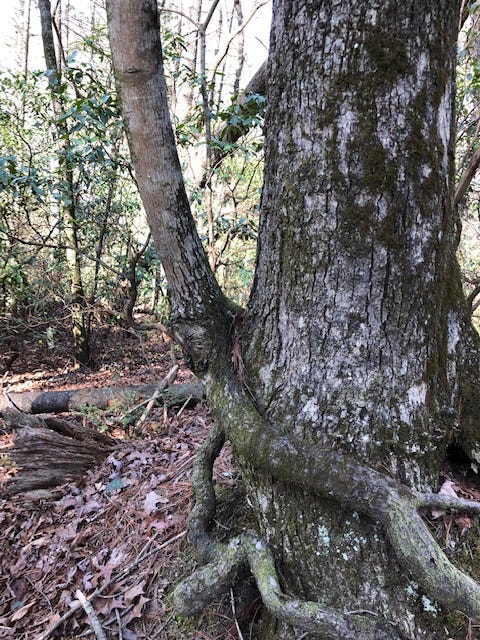

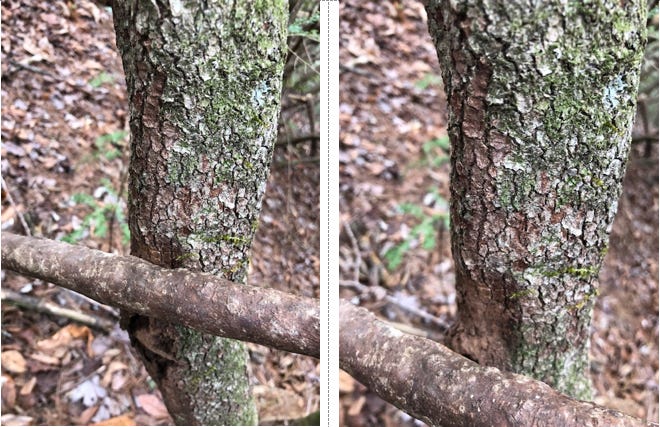
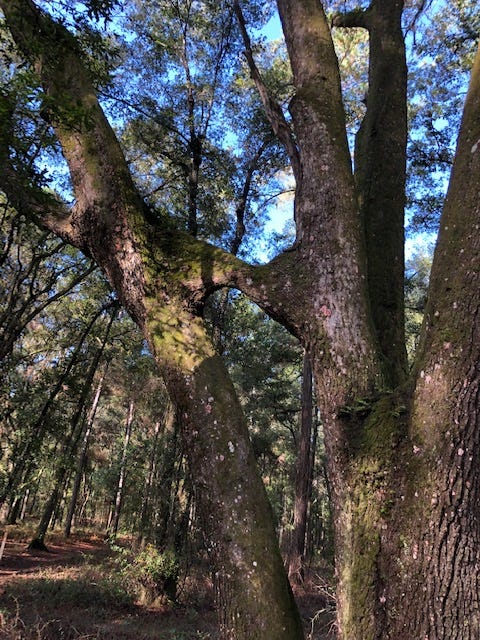

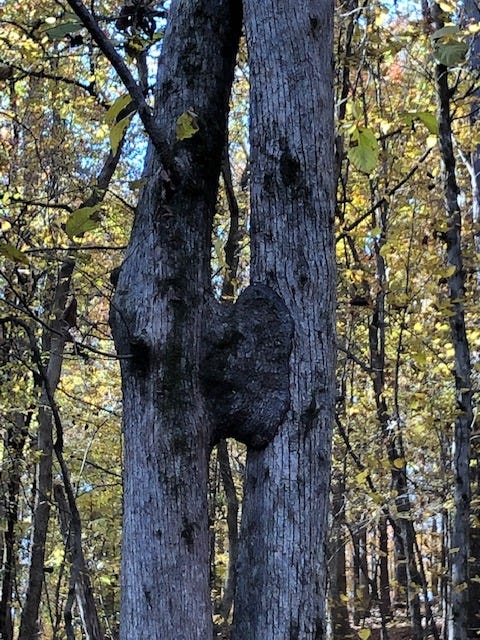

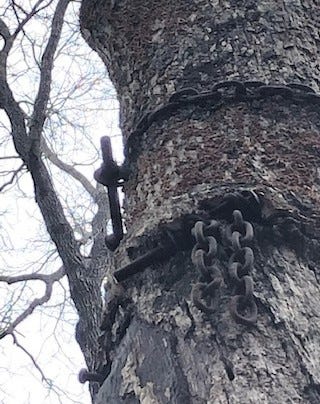
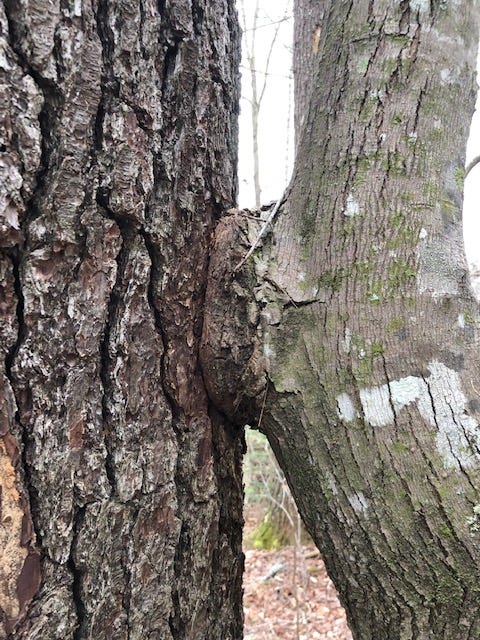
This is awesome. I've never heard the word inosculation before and it's delightful.